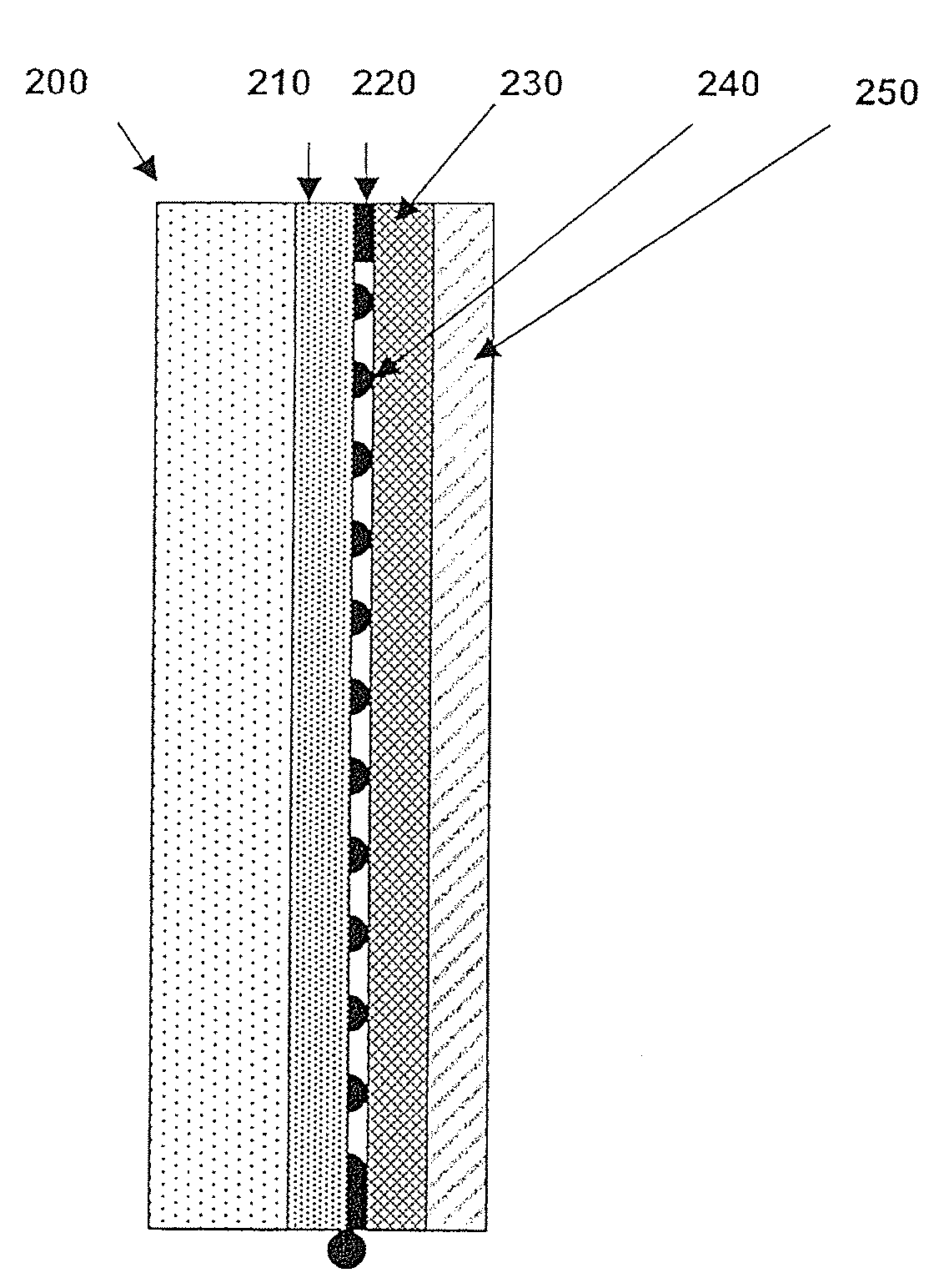Symmetric touch screen system with carbon nanotube-based transparent conductive electrode pairs
a carbon nanotube and electrode pair technology, applied in the field of carbon nanotube-based transparent conductive electrode pairs, can solve the problems of difficult to achieve transparent films for low power consumption applications, poor mechanical strength of indium tin oxide, and loss of mechanical integrity of thin film coatings
- Summary
- Abstract
- Description
- Claims
- Application Information
AI Technical Summary
Benefits of technology
Problems solved by technology
Method used
Image
Examples
example 1
[0087]One of the components, a glass substrate coated with carbon nanotubes for the panel side transparent electrode, was fabricated as follows. Nantero proprietary, CMOS grade suspension of carbon nanotubes (standard NTSL-4 diluted 2.5× times by DI water and pH adjusted to 7.5) in water was used in this example, and is known in the art. There are no molecular surfactants or polymeric suspension agents used in the formation of the CNT suspension. The details are more fully described in U.S. patent application Ser. No. 11 / 304,315, the entire contents of which are herein incorporated by reference. In a typical coating process, a glass substrate measuring 8″×10″ in size was placed on a hotplate set at 125 C. The NTSL-4 solution was spray coated from the top using an air-spray nozzle connected to an X-Y-Z robot. The spray coating was done in a specially designed coat chamber equipped with complete aerosol isolation for the operator and a two stage filtration chambers for sample transfer...
example 2
[0088]The specimen sample prepared as described in example 1 above, was annealed in a vacuum (−2 bar) oven at 120° C. for one hour. On completion of annealing the sample was allowed to cool to room temperature inside the vacuum oven and transferred for electrical characterization. Linear four probe resistance measurements (21 Volts maximum; 1 micro ampere current flow) were made on more than 30 points evenly spread across the entire sample. The mean resistance was measured to be 105.7 ohms with a resistance uniformity variation of 6.5%. The results are shown in FIG. 5.
example 3
[0089]A portion of the annealed sample described in example 2 above measuring 3″×8″ was cut of the larger specimen and further cut into smaller pieces to fit into a spectrophotometer. Optical transmission of the sample in the 300-900 nm range was measured in a Shimadzu UV3101 PC spectrophotometer. Blank glass substrates of similar sample dimensions were used to measure the substrate baseline absorption losses. The CNT film with an electrical conductivity of 105.7 ohms (or 480 ohms / square) exhibited an optical transmission of >87% % at 550 nm. The variation of optical transmittance of the CNT film with wavelength is shown in FIG. 6.
PUM
| Property | Measurement | Unit |
|---|---|---|
| transparencies | aaaaa | aaaaa |
| wavelength range | aaaaa | aaaaa |
| diameters | aaaaa | aaaaa |
Abstract
Description
Claims
Application Information
 Login to View More
Login to View More - R&D
- Intellectual Property
- Life Sciences
- Materials
- Tech Scout
- Unparalleled Data Quality
- Higher Quality Content
- 60% Fewer Hallucinations
Browse by: Latest US Patents, China's latest patents, Technical Efficacy Thesaurus, Application Domain, Technology Topic, Popular Technical Reports.
© 2025 PatSnap. All rights reserved.Legal|Privacy policy|Modern Slavery Act Transparency Statement|Sitemap|About US| Contact US: help@patsnap.com



